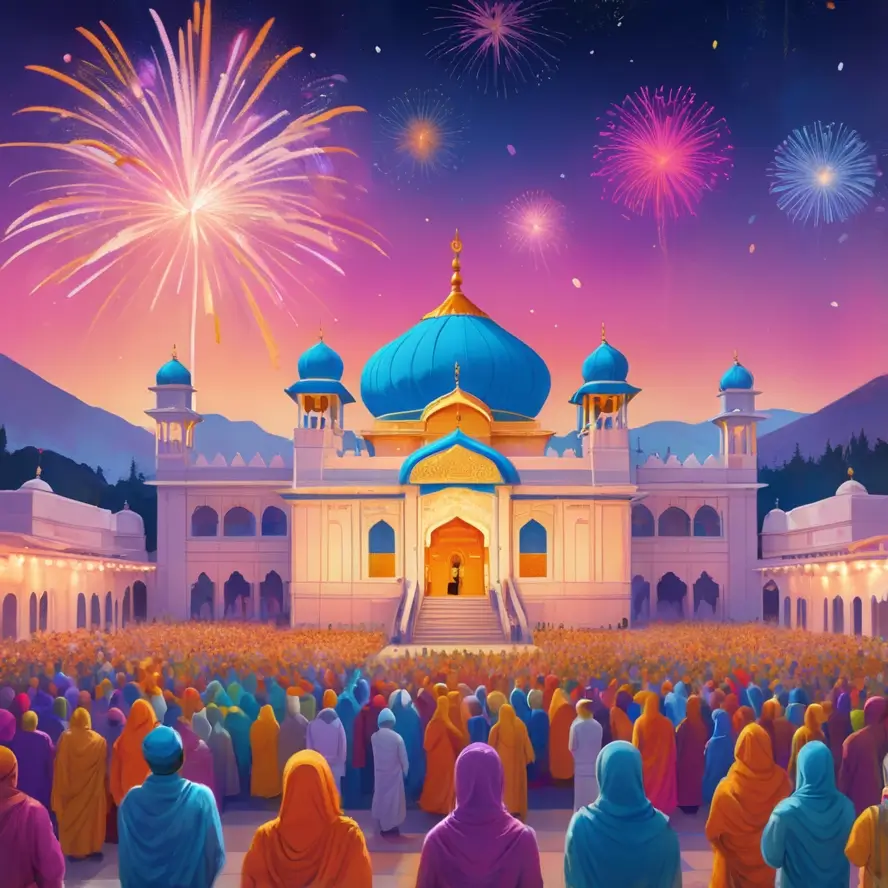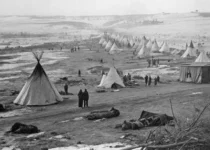Guru Nanak Jayanti
Guru Nanak Jayanti: When and How to Celebrate Gurpurab in India
Have you ever wondered why the streets light up with processions and gurdwaras overflow with devotees come November? Well, I’m about to take you on a journey into one of India’s most cherished celebrations – Guru Nanak Jayanti, also known as Gurpurab!
As someone who grew up watching the beautiful lanterns and hearing soul-stirring kirtans during this festival, I can tell you there’s something truly magical about this time of year. Whether you’re planning to participate in the celebrations or simply curious about this significant day, this guide has everything you need to know about Guru Nanak Dev Ji’s birth anniversary.

When is Guru Nanak Jayanti in 2025?
Guru Nanak Jayanti falls on Wednesday, November 5, 2025. This auspicious day marks the 556th birth anniversary of Guru Nanak Dev Ji, the founder of Sikhism. The date varies each year according to the traditional lunar calendar, typically falling on the full moon day (Kartik Purnima) in the month of Kartik.
I remember checking multiple calendars last year to confirm the date – so I’ve done the homework for you this time!
Is Guru Nanak Jayanti a National Holiday?
Yes, Guru Nanak Jayanti is recognized as a national holiday in India! This means government offices, schools, and many businesses remain closed, allowing people to participate in the celebrations.
However, it’s worth noting that while it’s a national holiday, some private institutions might follow different schedules. I once planned to visit a friend on Gurpurab only to find they had a working day – so it’s always good to check ahead!
State-wise Holiday Status
| State | Holiday Status |
|---|---|
| Punjab | Full state holiday |
| Haryana | Full state holiday |
| Delhi | Gazetted holiday |
| Chandigarh | Full UT holiday |
| Rajasthan | Restricted holiday |
| Uttar Pradesh | Restricted holiday |
| Other states | Generally observed as a restricted holiday |
The Significance: Why is Guru Nanak Day Celebrated?
Guru Nanak Jayanti commemorates the birth of Guru Nanak Dev Ji, the first of the ten Sikh Gurus and the founder of Sikhism. Born in 1469 in Talwandi (now Nankana Sahib in Pakistan), Guru Nanak Dev Ji was a revolutionary spiritual leader whose teachings formed the foundation of Sikhism.
What makes Guru Nanak so famous? His revolutionary ideas and teachings championed equality, social justice, and devotion to one God at a time when society was deeply divided by caste, religion, and gender. He taught that everyone has direct access to God without the need for rituals or intermediaries.
I’ve always been moved by his famous saying: “There is no Hindu, there is no Muslim, all are children of God.” In our sometimes divided world, this message of unity feels more relevant than ever.
The 4 Udasis of Guru Nanak
Guru Nanak’s life was marked by extensive travels known as ‘Udasis’ (journeys), during which he spread his message far and wide:
- First Udasi (1500-1506) – Traveled to eastern parts of India including Bengal and Assam
- Second Udasi (1506-1513) – Ventured south to Sri Lanka
- Third Udasi (1514-1518) – Journeyed north to Kashmir, Tibet, and Nepal
- Fourth Udasi (1519-1521) – Traveled west to Mecca, Medina, Baghdad, and other Middle Eastern countries

Did you know Guru Nanak visited over 150 places during these journeys? His travels spanned approximately 28,000 kilometers by foot, accompanied by his companion Bhai Mardana!
How to Celebrate Gurpurab?
Celebrating Gurpurab is a joyous occasion filled with devotion and community spirit. Here’s how the day typically unfolds:
Before Dawn: Amrit Vela
The celebrations begin in the early morning hours (around 4-5 AM) with the singing of ‘Asa Ki Var’ (morning hymns). I still remember waking up before sunrise as a child, the cool November air filled with melodious singing as we made our way to the gurdwara.
The Procession: Prabhat Pheri
Many communities organize colorful processions called ‘Prabhat Pheris’ a day before or on the morning of Gurpurab. These processions include the singing of hymns and are led by the Panj Pyare (Five Beloved Ones) carrying the Sikh flag, known as the Nishan Sahib.
At the Gurdwara: Main Celebrations
The main celebrations at the gurdwara include:
- Akhand Path: A 48-hour continuous reading of the Guru Granth Sahib that concludes on the day of Gurpurab
- Kirtan: Devotional singing of hymns
- Katha: Discourse on the life and teachings of Guru Nanak
- Langar: Free community meal served to all visitors regardless of religion, caste, or background
Special Traditions
- Guru ka Langar: Langars become even more elaborate on Gurpurab, with volunteers working for days to prepare the feast
- Seva (Selfless Service): Many Sikhs engage in special acts of service on this day
- Illumination and Fireworks: Gurdwaras are beautifully decorated with lights and diyas, with some communities also organizing firework displays
I once participated in preparing langar during Gurpurab, and the experience of serving others was truly humbling. The joy on people’s faces as they received food reminded me of the core Sikh value of selfless service.
Is November 15th a Holiday for Schools?
Yes, most schools across India observe a holiday on Guru Nanak Jayanti. However, this can vary:
- In states like Punjab and Haryana, it’s a mandatory holiday
- In other states, it may be listed as an optional holiday
- Some international schools might have different schedules
If you’re a parent planning around this date, I’d suggest checking your child’s school calendar to be sure!
Do Banks Have a Holiday on Guru Nanak Jayanti?
Yes, banks across India remain closed on Guru Nanak Jayanti as it’s recognized as a holiday under the Negotiable Instruments Act. I learned this the hard way last year when I had to postpone an important bank transaction! Remember to plan your banking needs accordingly.
What is the History of Gurpurab?
The tradition of celebrating Guru Nanak Jayanti began during the lifetime of the Sikh Gurus. However, the formalized celebrations as we know them today evolved gradually:
- Initially, the date of Guru Nanak’s birth was debated, with some records suggesting different dates
- Historical evidence confirms that by the time of the later Gurus, the celebration was already established
- During the 18th century, as Sikh communities stabilized after periods of persecution, the celebrations became more elaborate
- In the modern era, especially post-independence, Guru Nanak Jayanti gained recognition as a national festival
The celebrations have evolved over time while preserving their spiritual essence.
What is the Origin of the Sikh Religion?
Sikhism originated in the Punjab region of South Asia in the 15th century with the teachings of Guru Nanak Dev Ji. Dissatisfied with the ritual-centric practices and social inequalities prevalent in the society of his time, Guru Nanak founded a new faith based on:
- Belief in One God: Waheguru, the wonderful lord
- Equality: Rejection of caste, class, and gender discrimination
- Community Service: Emphasis on seva (selfless service) and vand chakna (sharing with others)
- Honest Living: Earning through honest means (kirat karni)
- Devotion: Nam japna (meditation on God’s name)
The religion developed through a succession of nine more Gurus after Guru Nanak, with the Guru Granth Sahib eventually being installed as the eternal Guru.
Who Was the First Sikh Guru?
Guru Nanak Dev Ji was the first Sikh Guru. Born in 1469 in Rai Bhoi Ki Talwandi (now Nankana Sahib in Pakistan), he showed spiritual inclination from a young age. The famous story of his disappearance for three days in a river before emerging with the proclamation “There is no Hindu, there is no Muslim” marks the beginning of his spiritual mission.
Guru Nanak was not just a spiritual leader but also a poet, philosopher, and social reformer. His teachings were recorded in the form of 974 hymns, which now form part of the Guru Granth Sahib.
Was Guru Nanak Hindu?
No, Guru Nanak was not Hindu, though he was born into a Hindu family. He founded Sikhism as a distinct faith with its own principles and practices. While Sikhism shares some philosophical elements with both Hinduism and Islam, it is a separate religion with unique beliefs.
Guru Nanak’s teachings specifically moved away from many practices common in Hinduism of his time, such as idol worship, the caste system, and certain ritualistic practices. His message emphasized direct connection with one God, without intermediaries or elaborate rituals.
Is Guru Nanak Jayanti a Hindu Festival?
No, Guru Nanak Jayanti is not a Hindu festival. It is a Sikh religious celebration commemorating the birth of Guru Nanak Dev Ji, the founder of Sikhism. However, in India’s pluralistic society, people of all faiths often participate in and respect each other’s celebrations. It’s common to see Hindus and people of other religions visiting gurdwaras on Gurpurab to pay their respects.
What Language Did Guru Nanak Speak?
Guru Nanak primarily spoke and wrote in a language that scholars identify as early forms of Punjabi, with elements of what is now called Lehndi or western Punjabi. His compositions also include words from Sanskrit, Persian, Arabic, and various local dialects of northern India.
The language used by Guru Nanak in his hymns is sometimes referred to as ‘Sant Bhasha’ – a kind of standardized dialect used by many saint-poets of that era. This multi-lingual approach helped his message reach people across different linguistic communities.
Which Date Guru Nanak Was Born?
According to traditional accounts, Guru Nanak was born on the full moon day (Purnima) of the Indian lunar month of Kartik. In the Gregorian calendar, this corresponds to November 1469. While the exact date in the Gregorian calendar varies, based on how the lunar calendar aligns each year, most historical accounts place his birth on what would now be April 15, 1469, in the old Hindu calendar.
However, Sikhs celebrate Guru Nanak’s birth anniversary according to the Nanakshahi calendar on Kartik Pooranmashi (the full moon day in the month of Kartik).
Why is Guru Nanak Dev Ji’s Birthday in November?
Guru Nanak’s birthday is celebrated in November according to the traditional Bikrami lunar calendar that was historically used by Sikhs. The celebration falls on Kartik Purnima (full moon day in the month of Kartik), which typically occurs in November in the Gregorian calendar.
It’s important to note that there has been some historical debate about the actual birth date. Some historical records suggest that Guru Nanak was born in the month of Baisakh (April), but the Kartik Purnima date has become the traditionally accepted and celebrated date within the Sikh community worldwide.
What Happened on November 14th in Sikh History?
November 14th holds significance in Sikh history primarily because it often marks the eve of Guru Nanak Jayanti. On this day, many significant preparations take place:
- Akhand Path: The 48-hour continuous reading of the Guru Granth Sahib is often started on this day
- Prabhat Pheris: Early morning processions sometimes begin on the eve of Gurpurab
- Gurdwara Decorations: Devotees engage in decorating gurdwaras with lights and flowers
Additionally, in some years when Guru Nanak Jayanti falls on November 14th itself (depending on the lunar calendar), the full celebrations would take place on this day.
How Do Sikhs Celebrate Guru Nanak’s Birthday?
Sikhs celebrate Guru Nanak’s birthday with great devotion and community spirit. The celebrations typically include:
- Prayers and Meditation: Special prayer services are held, including recitation from the Guru Granth Sahib
- Community Service: Many Sikhs engage in seva (selfless service) by volunteering at gurdwaras or helping those in need
- Langar Preparation: Community members come together to prepare and serve the langar (free community meal)
- Kirtan and Katha: Devotional singing and discourses on Guru Nanak’s life and teachings
- Nagar Kirtan: Processions through towns and cities, with the Guru Granth Sahib carried on a float, accompanied by singing of hymns
- Home Celebrations: Many families also celebrate at home with special prayers, sharing sweets, and recounting stories of Guru Nanak to children
The celebration emphasizes community bonding, reflection on Guru Nanak’s teachings, and putting those teachings into practice through service and devotion.
What is the Real Name of Guru Nanak?
Guru Nanak was born as Nanak Dev. “Guru” is a title that was bestowed upon him due to his spiritual leadership and teachings. His full name is often written as “Guru Nanak Dev Ji,” where “Ji” is a suffix added as a mark of respect in Indian culture.
At birth, he was named Nanak by his parents, Mehta Kalu and Mata Tripta. The name Nanak is derived from the Sanskrit word “nāṇaka,” which can mean “small” or “little one.”
What is the Full Story of Guru Nanak?
The life story of Guru Nanak is rich with spiritual insights and transformative moments. Here’s a condensed version:
Early Life and Spiritual Inclination
Born in 1469 in Talwandi (now Nankana Sahib, Pakistan), Nanak showed spiritual inclination from childhood. Stories tell of how he questioned religious rituals and spent time with holy men. As a young boy, he surprised teachers with his spiritual understanding and refusal to participate in empty rituals.
The Enlightenment Experience
At around age 30, while working as an accountant in Sultanpur Lodhi, Nanak had a profound spiritual experience. After disappearing in the Kali Bein river for three days, he emerged with a new message: “There is no Hindu, there is no Muslim, there is only one God, the Creator.”
Mission and Travels
After his enlightenment, Nanak began his mission to spread his message of devotion to one God, equality, and social justice. He traveled extensively in four major journeys (Udasis) that took him across India, Middle East, and parts of Asia.
During these travels, he engaged in dialogues with leaders of different faiths, challenging orthodox practices and emphasizing the essence of spirituality over ritual. His travels are estimated to have covered over 28,000 kilometers.
Establishment of Kartarpur
In 1522, after completing his travels, Guru Nanak settled in Kartarpur (now in Pakistan), where he established a community based on his teachings. Here, he introduced the concepts of:
- Langar: The community kitchen where all would eat together regardless of caste or status
- Sangat: The congregation where all would sit together to pray and discuss spiritual matters
- Pangat: The practice of sitting in a row during langar, emphasizing equality
Final Years and Succession
In Kartarpur, Guru Nanak lived as a householder, farmer, and spiritual teacher. Before his death in 1539, he appointed Bhai Lehna (later known as Guru Angad Dev) as his successor, establishing the line of Sikh Gurus that would continue his mission.
His last instructions emphasized that his physical body was unimportant; it was his teachings that should be revered. This began the tradition of passing the light of Guruship from one Guru to the next.
Why is Guru Nanak Important?
Guru Nanak’s importance stretches far beyond being the founder of Sikhism. His significance lies in:
- Revolutionary Social Ideas: He challenged the rigid caste system, gender inequality, and religious intolerance of his time
- Spiritual Innovation: He developed a unique path that emphasized direct connection with God without ritualistic intermediaries
- Interfaith Bridge-Builder: His teachings drew from and respected both Hindu and Islamic traditions while establishing a distinct path
- Practical Spirituality: He emphasized living a righteous life in the world rather than renouncing it
- Literary Contribution: His compositions form a significant part of the Guru Granth Sahib, with profound poetic and philosophical value
- Institutional Reforms: He established institutions like langar that continue to serve millions worldwide
I personally find his teachings on equality particularly relevant in today’s world. His insistence that all humans are equal before God, regardless of religion, gender, or social status, was revolutionary in the 15th century and remains a powerful message today.
How Old is Sikhism?
Sikhism is approximately 555 years old, having been founded in the late 15th century. The religion began with Guru Nanak’s teachings around 1469 and developed through the guidance of ten successive Gurus until 1708, when Guru Gobind Singh designated the Guru Granth Sahib as the eternal Guru.
This makes Sikhism one of the world’s youngest major religions, yet it has grown to become the fifth-largest organized religion with approximately 30 million followers worldwide.
Guru Nanak Jayanti is more than just a religious festival—it’s a celebration of revolutionary ideas that continue to inspire millions across the world. As we mark this special day, we honor not just the birth of a spiritual leader, but the birth of ideas that champion equality, social justice, and devotion.
Whether you’re planning to visit a gurdwara, participate in langar, or simply reflect on Guru Nanak’s teachings this November 15th, remember that the true celebration lies in embodying the principles he taught: honest living, sharing with others, and recognizing the divine light in all.
I hope this guide helps you understand and appreciate the significance of Gurpurab! Have you ever participated in Guru Nanak Jayanti celebrations? I’d love to hear about your experiences in the comments below!


